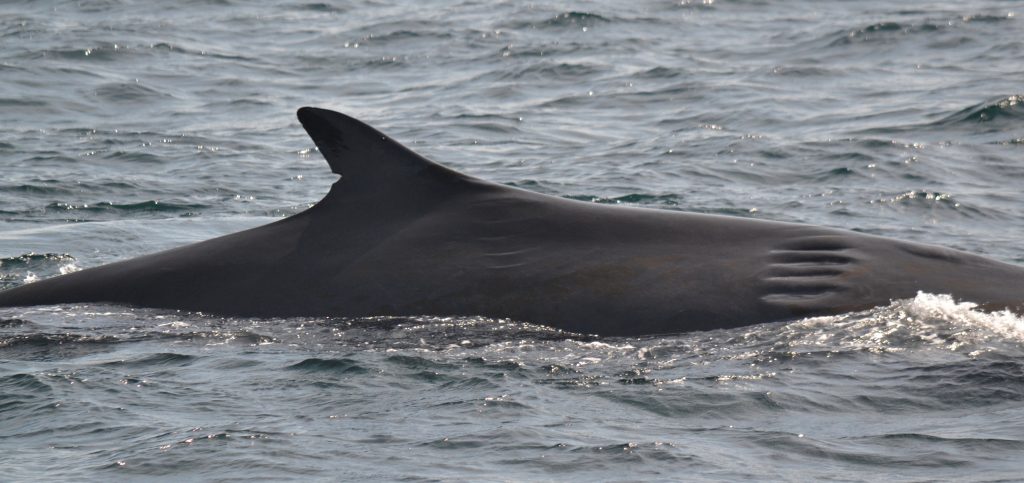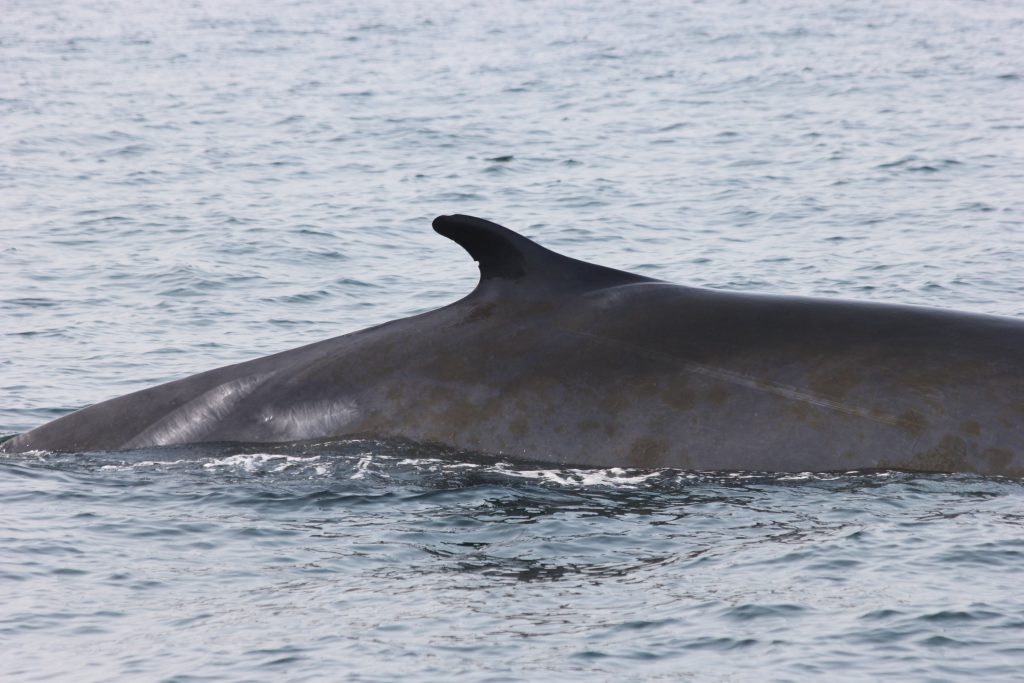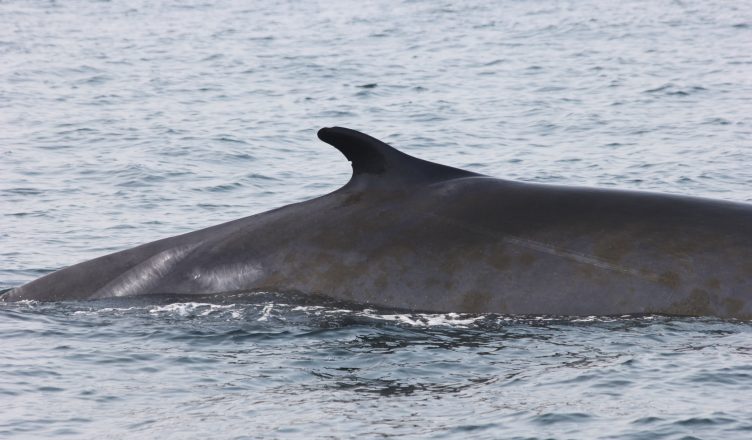If you have been whale watching with a Blue Ocean Society naturalist or affiliate, you may have seen that person taking photos of the whales as she or he juggles the microphone, GPS, clipboard and binoculars. Even after we get the identifying shot that tells us who the whale is, we continue to take photos. Why? A picture can tell us more than just who the whale is. It can give us insight into behaviors, associations, health and even human impacts on the whales we love to watch.

Recently, at the 22nd Biennial Conference on the Biology of Marine Mammals in Halifax, Nova Scotia, I presented results of a study of fin whale images taken by our staff between 2003 and 2011. Specifically, I was looking for signs of anthropogenic sources of injuries. Scars. I was looking for scars on fin whales that were caused by human activities.
Fin whales are currently listed as an endangered species and are the most frequently seen endangered whale in our area, around Jeffreys Ledge. Little is known about them including their seasonal habitat usage or annual migrations. However, we do know that these fin whales are getting hit by boats and entangled in fishing gear based on the types of scars we find on them. Initial results showed that up to 30% of individual fin whales identified annually exhibit visible scars from these human-related activities. Yet, this is a minimal result of the actual impacts. Since fin whales do not often lift their flukes above the surface, we are not seeing that important area where fishing gear entanglements are most likely to occur. We also do not know how many fin whales perish as the result of entanglements. Additionally, fin whales that are hit by large ships will likely not survive, and very few fin whale carcasses are seen or reported.

As you can see, this is a big problem and with more effort we will hopefully be able to answer the basic questions, such as “Where do fin whales go in the winter?”, and “Where are they most likely to encounter these threats?”






